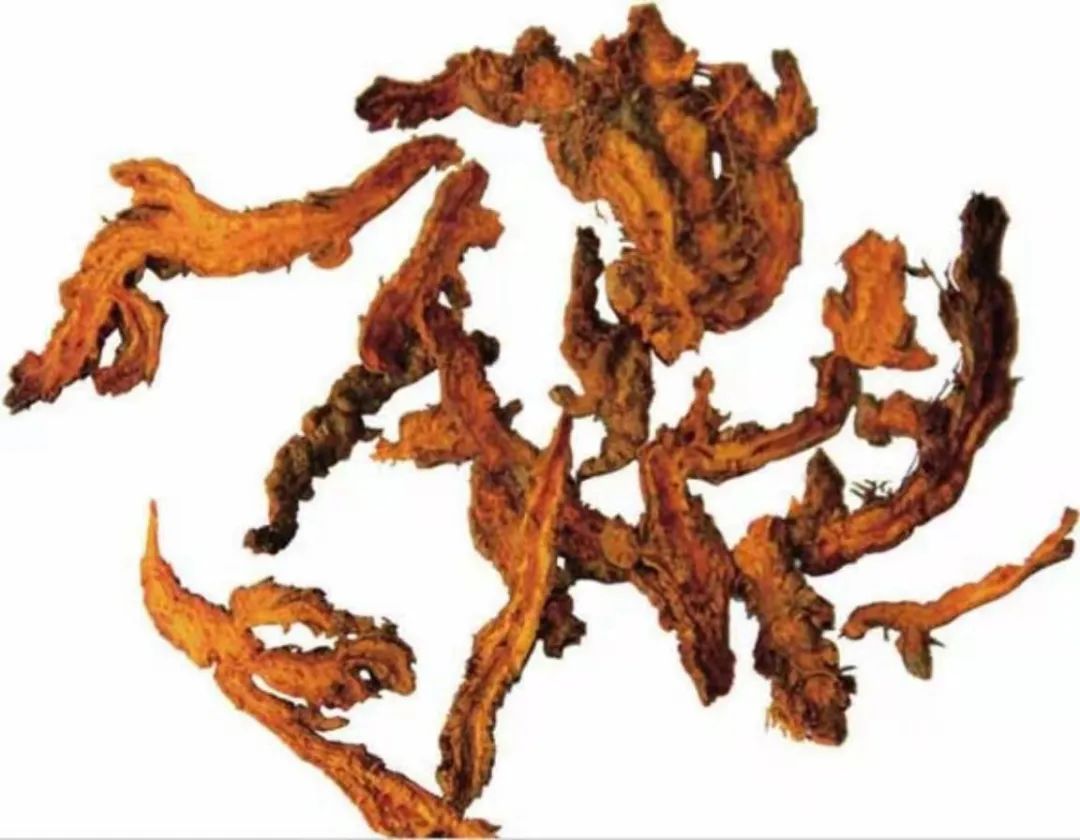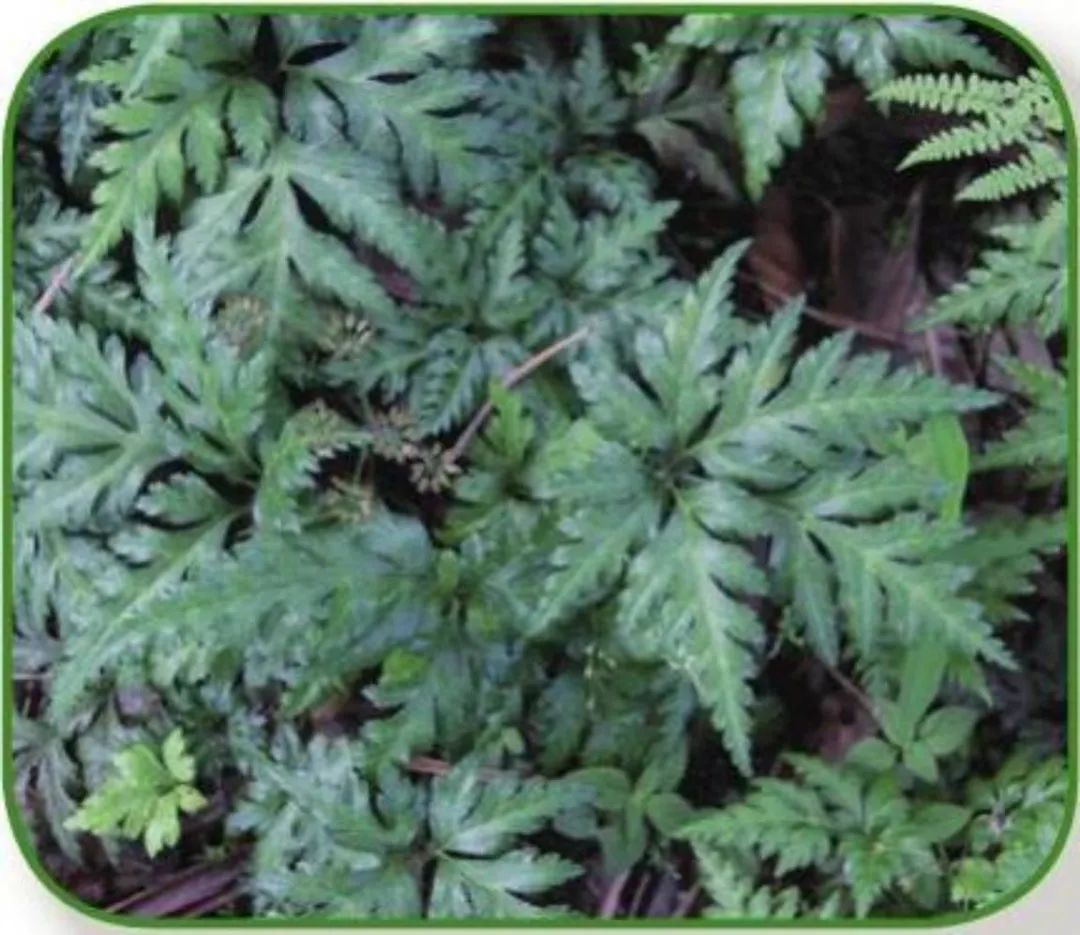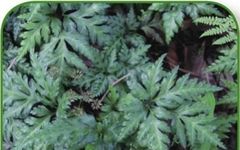Understanding Huang Lian

Herb Name: Huang Lian (Huánglián)
Taste and Properties: Bitter, Cold.
Meridians: Heart, Spleen, Stomach, Liver, Gallbladder, Large Intestine.
Functions: Clears heat and dries dampness, drains fire and detoxifies.
Indications: 1. Damp-heat obstruction with fullness, vomiting, diarrhea; 2. High fever with delirium, excess heart fire, irritability and insomnia, palpitations; 3. Blood heat with vomiting or nosebleeds; 4. Stomach heat with vomiting and sour regurgitation, thirst, toothache due to stomach fire; 5. Carbuncles, boils, red and swollen eyes, mouth and tongue sores; 6. Eczema, suppurative dermatitis, ear discharge.

The Story of Huang Lian

Once there was a doctor named Tao, whose daughter, Mei Wa, was beautiful, intelligent, and lively, cherished by her parents. Mei Wa loved to plant flowers and herbs, and every morning, her first task was to check on her garden.
One morning in the first month of the lunar calendar, with frost still lingering and the cold air biting, Mei Wa went to the garden and found no flowers blooming and the grass not yet sprouting. She opened the back door and walked up the mountain path.
Suddenly, she saw a small oil-green flower blooming by the roadside. The more she looked at it, the more she liked it. She loosened the surrounding soil with her fingers, dug it up by the roots, and planted it in her garden. The helper saw this wild herb blooming in the cold of January and liked it too, watering it daily and fertilizing it monthly. The plant grew more and more lush, and later it produced seeds. The helper scattered the seeds in the garden, and the following year, even more green flowers bloomed.
Unexpectedly, Mei Wa fell ill with a strange disease, feeling hot all over, vomiting, and having diarrhea. In just three days, she became emaciated. Doctor Tao was away treating patients, so Mei Wa’s mother had to invite another local doctor to treat her. This doctor, a friend of Doctor Tao, was very attentive, but after three doses of medicine, there was no improvement; her diarrhea worsened, and she even began to pass blood.
Her mother stayed by her bedside all day, anxious and unable to eat or sleep, crying at the thought of her daughter’s illness. The helper, seeing this, was very worried. Suddenly, he remembered the green flower. Last month, he had a sore throat and chewed a leaf from it, which, though extremely bitter, had relieved his throat pain after an hour. He wondered if this herb could help Mei Wa. He decided to try it. He pulled up a plant with roots and leaves, boiled it into a bowl of water, and gave it to Mei Wa while her mother was cooking. To his surprise, after drinking it in the morning, she felt much better by the afternoon; after two more doses, she was completely healed.
When Doctor Tao returned and learned what had happened, he was very moved and repeatedly thanked the helper, saying, “Mei Wa suffered from damp-heat in the intestines and stomach, and only a medicine that clears heat and dries dampness can cure her. This little green flower seems to have excellent heat-clearing and damp-drying effects!”
Because the helper’s surname was Huang and his name was Lian, in gratitude, the herb was named Huang Lian.

Detailed Explanation of Huang Lian

This herb is the dried rhizome of the Ranunculaceae plant Huang Lian, Sanjiao Ye Huang Lian, or Yun Lian. The three types are commonly referred to as “Wei Lian,” “Ya Lian,” and “Yun Lian.” Wei Lian and Ya Lian are mainly produced in Sichuan and Hubei, while Yun Lian is primarily produced in Yunnan. It is harvested in autumn, with the fibrous roots and soil removed, dried, and any remaining fibrous roots knocked off. It can be used raw or stir-fried, or prepared with ginger juice, wine, or Wu Zhu Yu water.
Dosage: 2-5g for decoction; appropriate amount for external use. Raw Huang Lian functions to clear heat and dry dampness, drain fire and detoxify; wine-prepared Huang Lian is good for clearing heat from the upper jiao, often used for red, swollen eyes and mouth sores; ginger-prepared Huang Lian is good for harmonizing the stomach and stopping vomiting, often used for cold-heat counterflow, damp-heat obstruction, and fullness with vomiting; Wu Zhu Yu-prepared Huang Lian is good for soothing the liver and harmonizing the stomach to stop vomiting, often used for liver-stomach disharmony with sour regurgitation.
Precautions: This herb is very bitter and cold; excessive or prolonged use can harm the spleen and stomach, and it is contraindicated for those with spleen and stomach deficiency and cold. Its bitter and drying nature can harm yin fluids, so those with yin deficiency and fluid damage should use it cautiously.
Clinical Combinations: 1. Used alone or with Huang Bai, Qin Pi, Bai Tou Weng for damp-heat diarrhea and vomiting, such as Bai Tou Weng Tang; 2. Combined with Mu Xiang for damp-heat diarrhea, abdominal pain, and tenesmus, such as Xiang Lian Wan; 3. Combined with Bai Shao, Mu Xiang, Bing Lang, etc., for damp-heat diarrhea with pus and blood, such as Shao Yao Tang; 4. Combined with Wu Mei for chronic damp-heat diarrhea with pus and blood, such as Huang Lian Wan; 5. Combined with Ge Gen, Huang Qin, etc., for damp-heat diarrhea with exterior symptoms and fever, such as Ge Gen Qin Lian Tang; 6. Combined with Hou Po, Shi Chang Pu, Ban Xia, and other damp-drying and qi-moving herbs for damp-heat accumulation in the spleen and stomach, chest and abdominal fullness, vomiting, and diarrhea, such as Lian Po Yin; or with Huang Qin, Ban Xia, Gan Jiang, etc., such as Ban Xia Xie Xin Tang; 7. Combined with Lian Qiao, Niu Huang, etc., for heat disease disturbing the heart, high fever, irritability, and even delirium, such as Huang Lian Jie Du Tang; 8. Combined with Zhu Sha, Sheng Gan Cao for excess heart fire, irritability, and insomnia, such as Huang Lian An Shen Wan; 9. Combined with Bai Shao, E Jiao, and other yin-nourishing and blood-replenishing herbs for excess heart fire, heat damaging yin blood, causing irritability and insomnia, such as Huang Lian E Jiao Tang; 10. Combined with Rou Gui for heart fire rising and disharmony between heart and kidney, causing palpitations and insomnia, such as Jiao Tai Wan; 11. Combined with Da Huang, Huang Qin for evil fire blazing internally, causing vomiting blood and nosebleeds, such as Xie Xin Tang; 12. Combined with Ban Xia, Zhu Ru, Chen Pi for stomach heat vomiting, such as Huang Lian Chen Pi Zhu Ru Tang; 13. Combined with Wu Zhu Yu for liver fire invading the stomach, causing vomiting and sour regurgitation, such as Zuo Jin Wan; 14. Combined with Mai Dong for stomach heat excess, causing excessive hunger and thirst, such as Xiao Ke Wan; or with Huang Bai, such as Huang Bai Wan; 15. Combined with Sheng Di, Sheng Ma, Mu Dan Pi, etc., for stomach fire attacking upward, causing swollen gums and toothache, such as Qing Wei San; 16. Combined with Huang Qin, Huang Bai, Zhi Zi for carbuncles and toxic sores, such as Huang Lian Jie Du Tang; or externally with Huang Bai for topical application, such as Huang Lian Gao; 17. Combined with Dan Zhu Ye for red, swollen eyes, and conjunctivitis, such as Huang Lian Tang; 18. Combined with Zhi Zi, Zhu Ye for heart fire rising, mouth and tongue sores, or heart heat descending to the small intestine causing irritability, mouth sores, and painful urination, such as Qing Xin Dao Chi San; 19. Made into an ointment for external application, can treat skin eczema and dermatitis; juice can be applied to affected areas, suitable for ear discharge; decoction can be used as eye drops for red and swollen eyes.
Related Formulas: 1. Ban Xia Xie Xin Tang 2. Qing Ying Tang 3. Huang Lian Jie Du Tang 4. Pu Ji Xiao Du Yin 5. Zuo Jin Wan 6. Qing Wei San 7. Shao Yao Tang 8. Bai Tou Weng Tang 9. Qing Gu San 10. Dang Gui Liu Huang Tang 11. Qing Shu Yi Qi Tang 12. Ge Gen Huang Qin Huang Lian Tang 13. Zhu Sha An Shen Wan 14. An Gong Niu Huang Wan 15. Zhi Shi Xiao Pi Wan 16. Xiao Xian Xiong Tang 17. Zhi Shi Dao Zhi Wan 18. Mu Xiang Bing Lang Wan 19. Jian Pi Wan 20. Fei Er Wan 21. Wu Mei Wan
Mnemonic Verse:
Huang Lian clears the heart, stomach, large intestine, and heart,
Its bitter and cold nature easily injures fluids,
It clears heat and dries dampness, can drain fire,
Detoxifying effects are truly effective.
Preparation Methods:
1. Huang Lian: Take the original herb, remove impurities, wash thoroughly, cut into thin slices, dry, and sift out debris; or crush when needed.
2. Wine-prepared Huang Lian: Take Huang Lian slices, mix with a specified amount of yellow wine, let it soak slightly, and when the wine is absorbed, place in a frying container, heat gently to dry, then cool and sift out debris. For every 100kg of Huang Lian slices, use 12.5kg of yellow wine.
3. Ginger-prepared Huang Lian: Take Huang Lian slices, mix with ginger juice, let it soak slightly, and when the ginger juice is absorbed, place in a frying container, heat gently to dry, then cool and sift out debris. For every 100kg of Huang Lian slices, use 12.5kg of fresh ginger or 4kg of dried ginger, juiced or decocted.
4. Wu Zhu Yu-prepared Huang Lian: Take Wu Zhu Yu and boil with an appropriate amount of water, strain the juice, mix with Huang Lian slices, let it soak slightly, and when the medicinal liquid is absorbed, place in a frying container, heat gently to dry, then cool and sift out debris. For every 100kg of Huang Lian slices, use 10kg of Wu Zhu Yu.
Effects of Preparation:
1. Huang Lian: Bitter in taste, cold in nature. Enters the heart, liver, stomach, and large intestine meridians. It has the functions of draining fire and detoxifying, clearing heat and drying dampness, used for damp-heat fullness, vomiting, diarrhea, jaundice, high fever with delirium, excess heart fire, irritability and insomnia, blood heat with vomiting or nosebleeds, red eyes, sour regurgitation, toothache, thirst, carbuncles, and boils; externally treats eczema, dermatitis, and ear discharge.
2. Wine-fried Huang Lian: Can guide the herb upward, alleviating its cold nature, good for clearing fire from the head and eyes.
3. Ginger-fried Huang Lian: Its bitter and cold nature is moderated, enhancing its anti-nausea effect.
4. Wu Zhu Yu-prepared Huang Lian: Suppresses its bitter and cold nature, allowing Huang Lian to clear damp-heat without stagnation, primarily dispersing liver and gallbladder fire.
Copyright Statement
This article is organized and published by Xing Ren Ba Ba. Please indicate the source when reprinting. The content and illustrations are compiled from the “Traditional Chinese Medicine” textbook, “Mnemonic Verses for Traditional Chinese Medicine,” “300 Common Chinese Herbs Identification and Application Color Atlas,” and TCM Tong, etc. If there is any infringement, please contact for removal.


